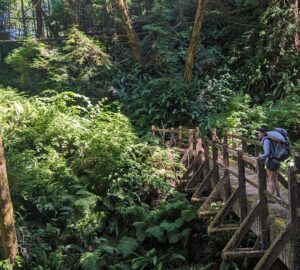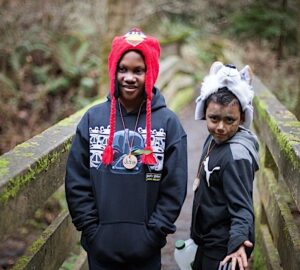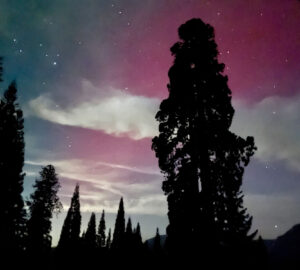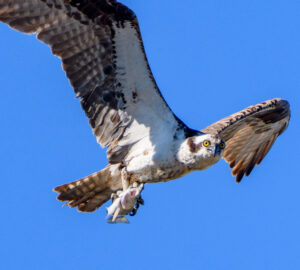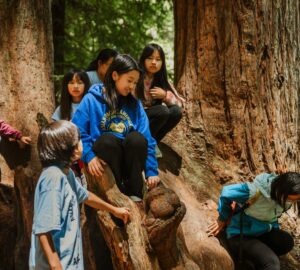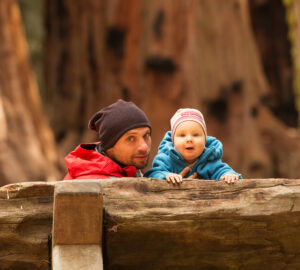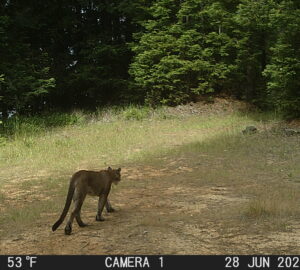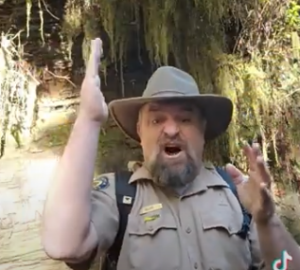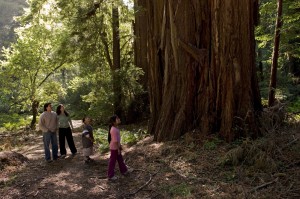
Last week, I wrote about the value of bringing kids to the redwoods. A family trip to the redwoods can be such an incredible gift to children, creating lifelong memories and a connection with nature that can improve life in so many ways. But as a parent, I know that can be a lot harder than it sounds.
Despite our best intentions, there are a lot of hurdles to a visit to the redwoods. Even for families with the inclination and motivation, getting our kids into the woods is a lot harder these days than it was when we were young. Knowing how important it is for our families and our communities to have young people spend unstructured time outside, what can we do to lower the barriers to having wild places be a greater part of our 21st century lifestyle?
Much more than previous generations, today’s children are growing up in urban or suburban environments* surrounded by technology and without nearby creeks, woods and fields in which to play. As a recent article in The Atlantic addressed, kids are more closely supervised than ever – they don’t explore on their own, they stay at home more. And when they do have the time to play outside, it is often in the highly-structured environment of organized athletics.
The days of kids spending their summers and weekends running out the back door and exploring nature until dinnertime are fading. The unfortunate consequence is that “nature” is foreign and even a little scary: it’s dirty, too hot or cold, wet, tiring, and there are bugs!
I have seen this trend firsthand in my own family. Even with my incredible good fortune to have parks, forests and wild places as both my avocation and my vocation, it is hard to get my sons outside. I will admit to bribing my toddlers with jelly beans to go on hikes and, these days, to hitting the trails by myself after dropping my middle schoolers off at soccer practice.
We all have to do better at thinking creatively and reconnecting the next generation with the outdoors. I’ve seen how connections with nature enrich peoples’ lives. I believe completely that access to parks and open spaces makes our communities healthier and stronger. I am convinced that the more we do now to make our parks and green spaces accessible and welcoming, the stronger our society will be.
We at the League are thinking hard about how to bridge this divide. Connecting people to the peace and beauty of the redwood forest is straight out of our mission statement. As we approach our 100th anniversary and broaden our understanding of the families of California, there is a lot more we can do to advance that connection.
Already, Save the Redwoods League has committed millions of dollars to upgrading redwood parks and preserves to improve the visitor experience. We are advancing trail construction projects at Pfeiffer Big Sur and Humboldt Redwoods State Parks, and improving campgrounds and day use areas at Portola Redwoods and Hendy Woods State Parks.
The League is exploring where rustic cabins might make it easier for families to experience the redwood forests, and how interactive technology can make learning about nature more fun and familiar to today’s students. We have published free Family Guides to the Coast Redwoods and the Giant Sequoias, containing tips and resources on bringing kids to the redwoods.
But we need to do more. And we’d like to hear from you. What barriers do you and your family or community face in getting out in the woods? How can the League help to make redwood parks central to the California experience? Please share your thoughts in the comments section below or reach out to me on Twitter.
* https://www.census.gov/newsroom/releases/archives/2010_census/cb12-50.html

